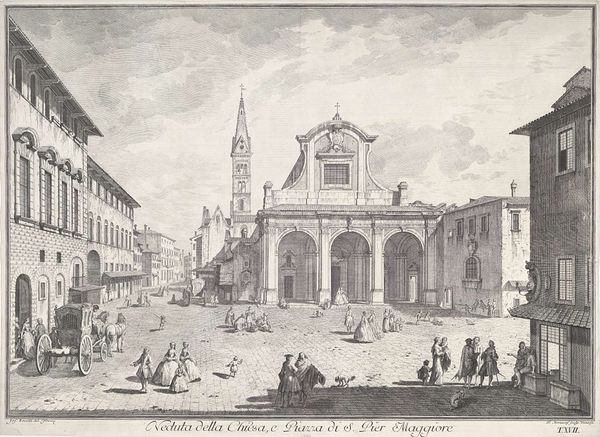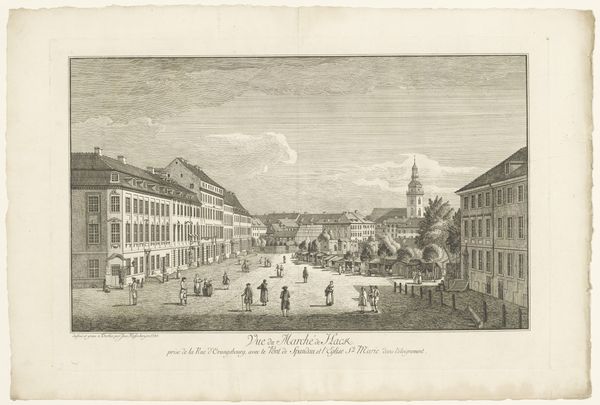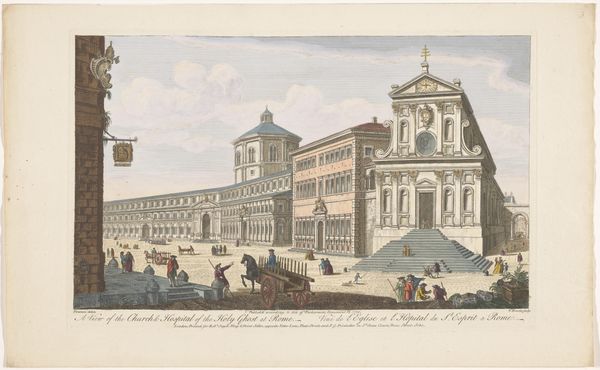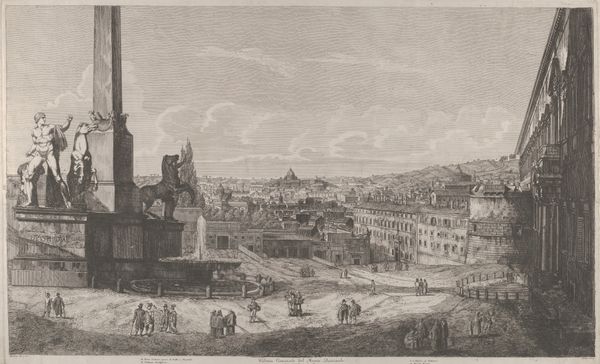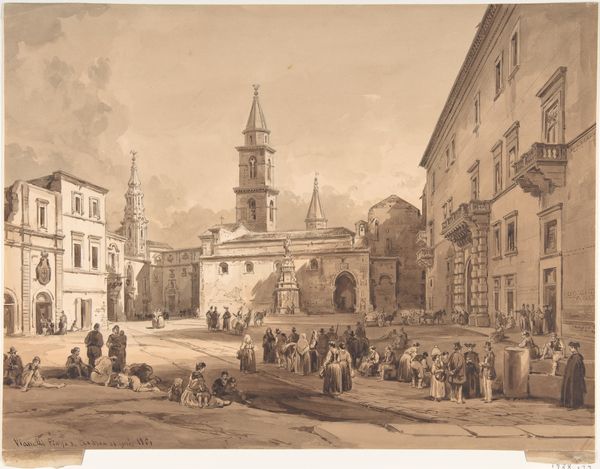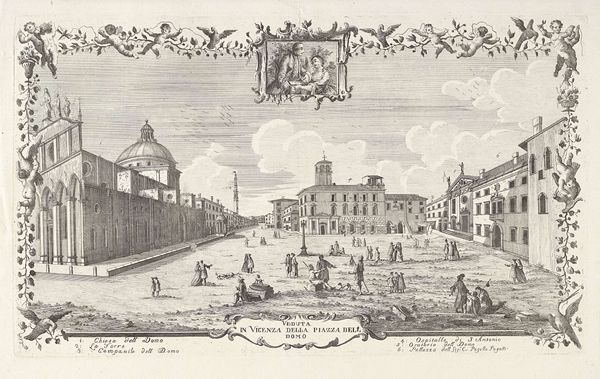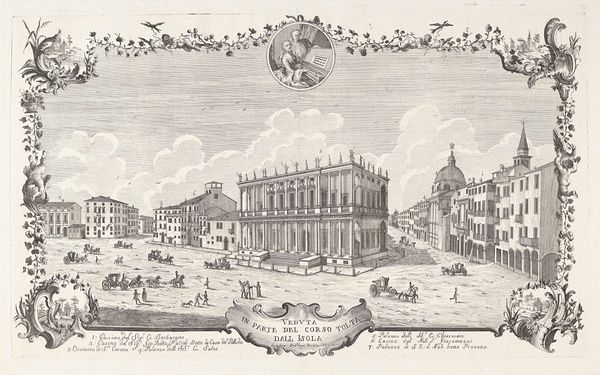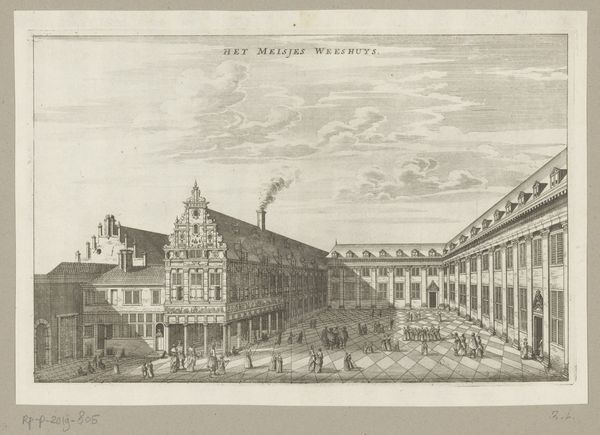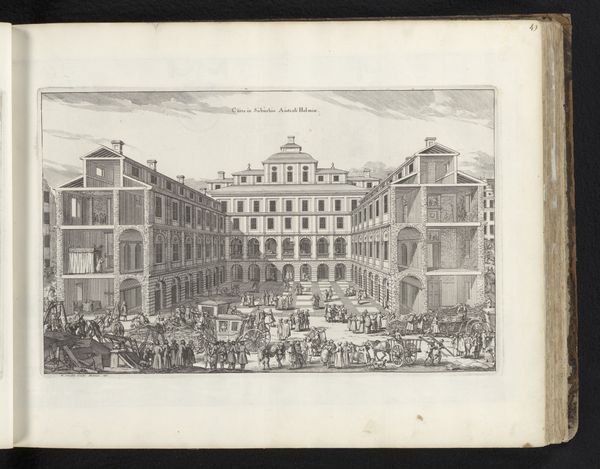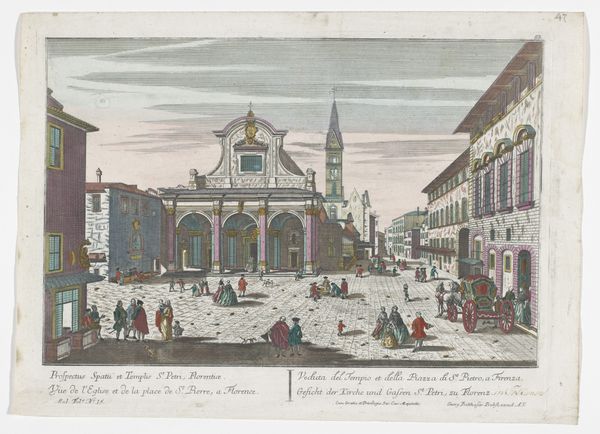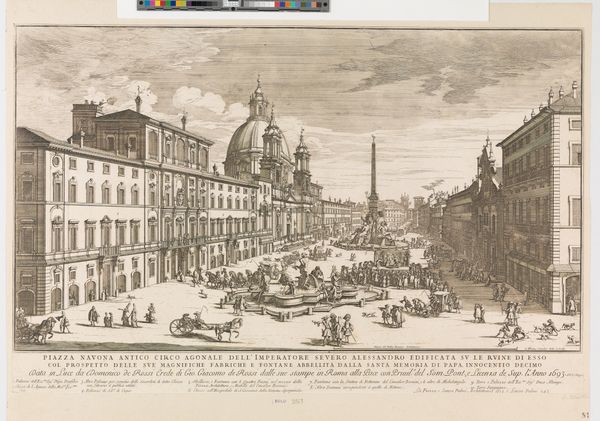
The Church of San Giacomo di Rialto, at right Palazzo dei Dieci and the bridge of Rialto 1763
0:00
0:00
Dimensions: Plate: 13 1/8 × 18 7/16 in. (33.4 × 46.8 cm) Sheet: 13 11/16 × 18 9/16 in. (34.8 × 47.2 cm)
Copyright: Public Domain
Editor: This is Giovanni Battista Brustolon’s 1763 engraving, "The Church of San Giacomo di Rialto, at right Palazzo dei Dieci and the bridge of Rialto." The detail is incredible; I’m struck by how he captured the bustle of daily life in Venice. What can you tell me about the context of this piece? Curator: Look closely. Consider the rise of Venice as a powerful trading center in the 18th century. Venice, although known as a site for carnivals and parties, was first and foremost a center of commerce and power. See how the church and government buildings dominate the visual space. This wasn’t simply documentation; it was a carefully constructed visual argument about the city's identity. Editor: So, it's not just a pretty picture but also a statement about power? Curator: Exactly! And who held that power? Venice was supposedly a republic. Yet in reality it was controlled by a wealthy aristocracy. Consider their perspective. These prints were not only a form of art but a mechanism for reinforcing a specific vision of Venetian society—orderly, prosperous, and divinely sanctioned. Do you notice any subtle symbols of this authority? Editor: The figures in the foreground, perhaps? Are they meant to represent the common people under the church's guidance? Curator: Precisely! Reflecting on that, what does it say about the artist’s own position, creating this image for a particular audience? Is he reinforcing the power structures, or perhaps subtly questioning them through the very act of depicting this stratified society? Editor: I see. It’s fascinating how a cityscape can be interpreted as a commentary on social structures. Thank you. Curator: My pleasure. Remember that every image is embedded within networks of power, culture, and ideology. Question everything!
Comments
No comments
Be the first to comment and join the conversation on the ultimate creative platform.
